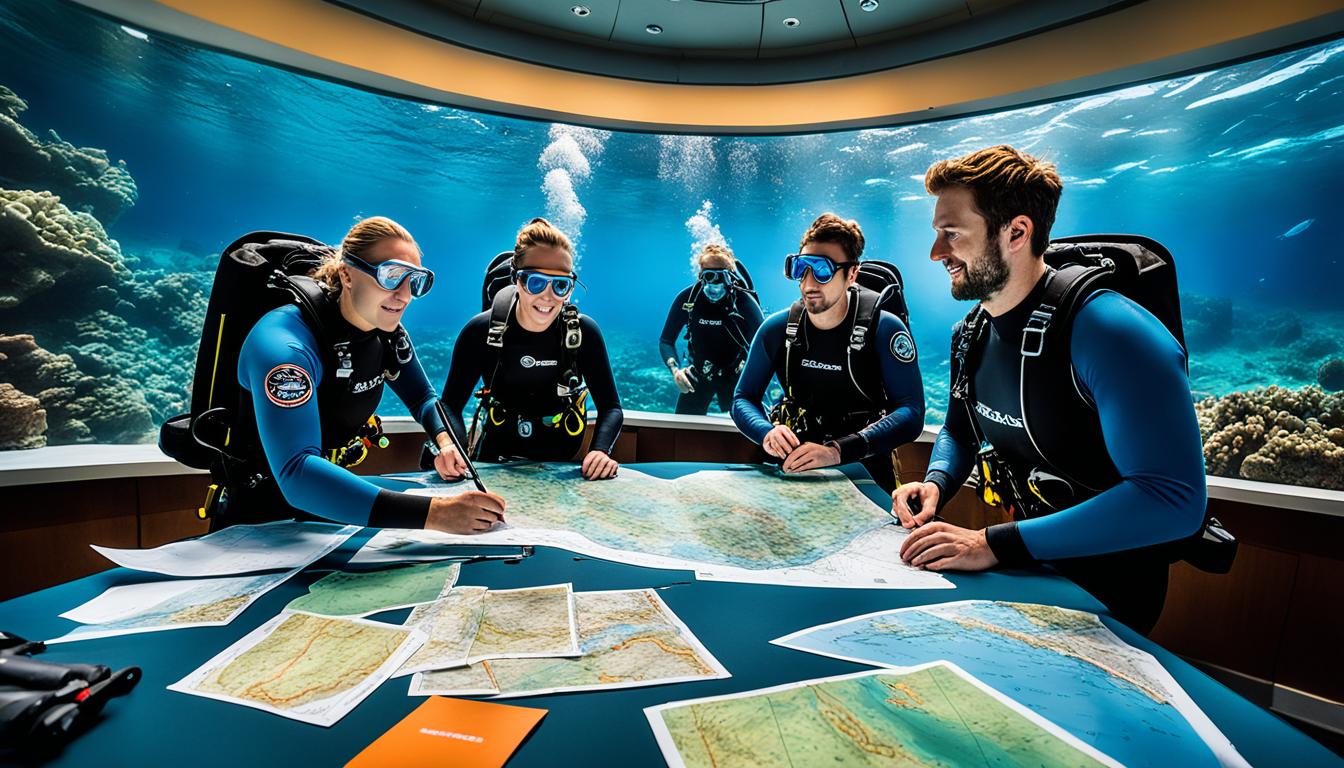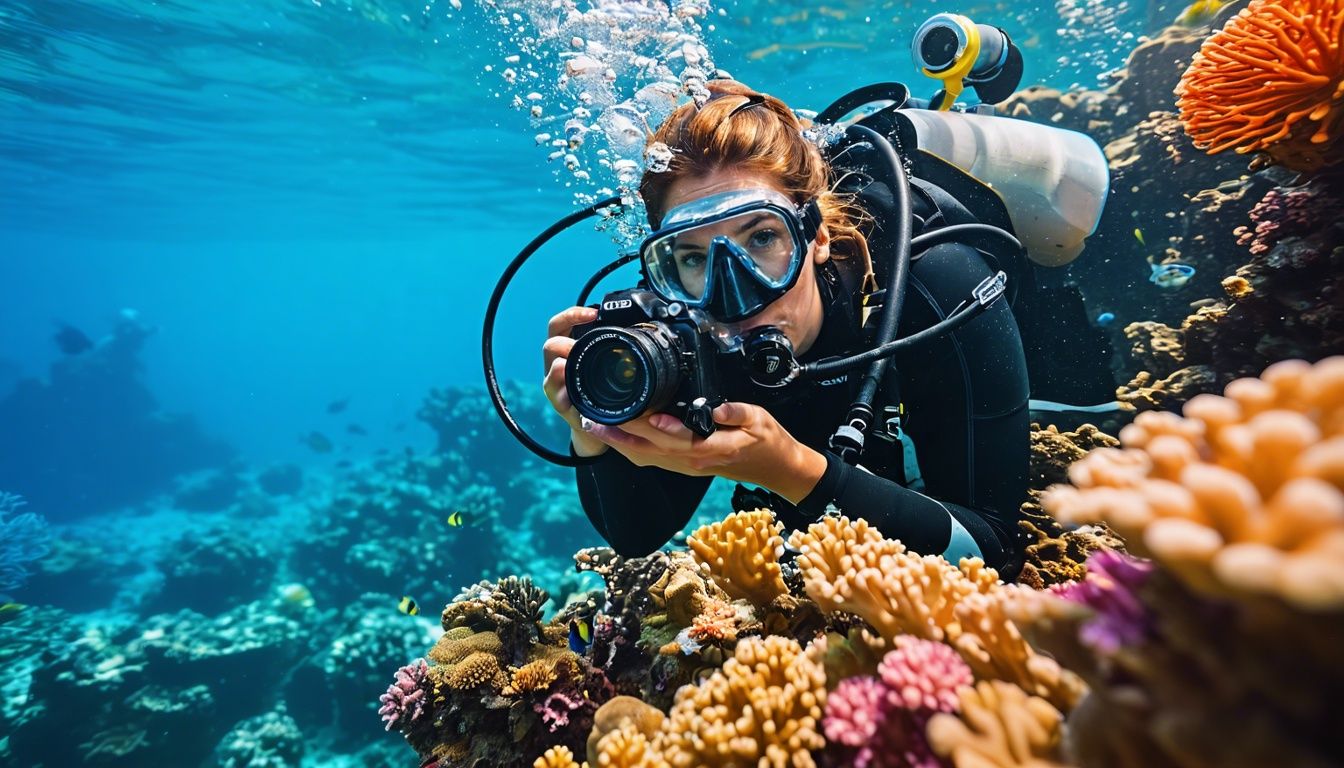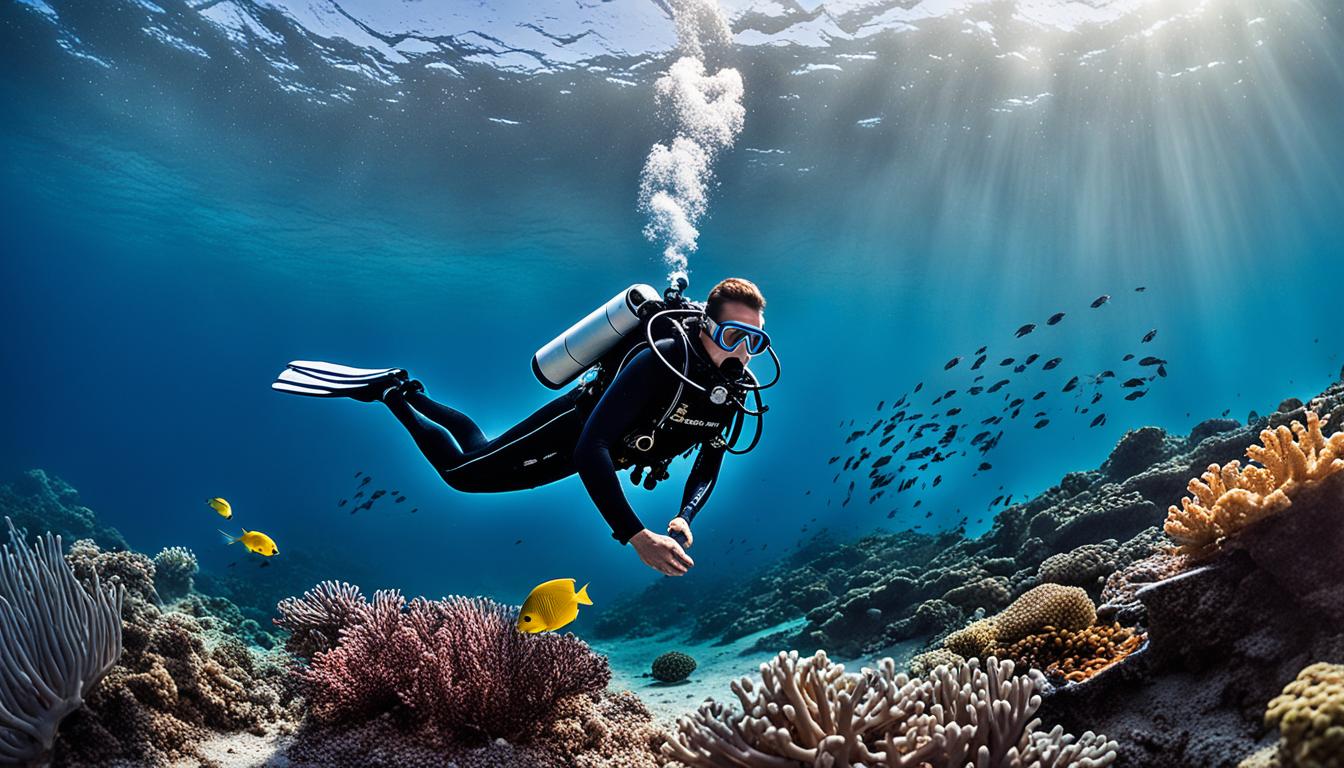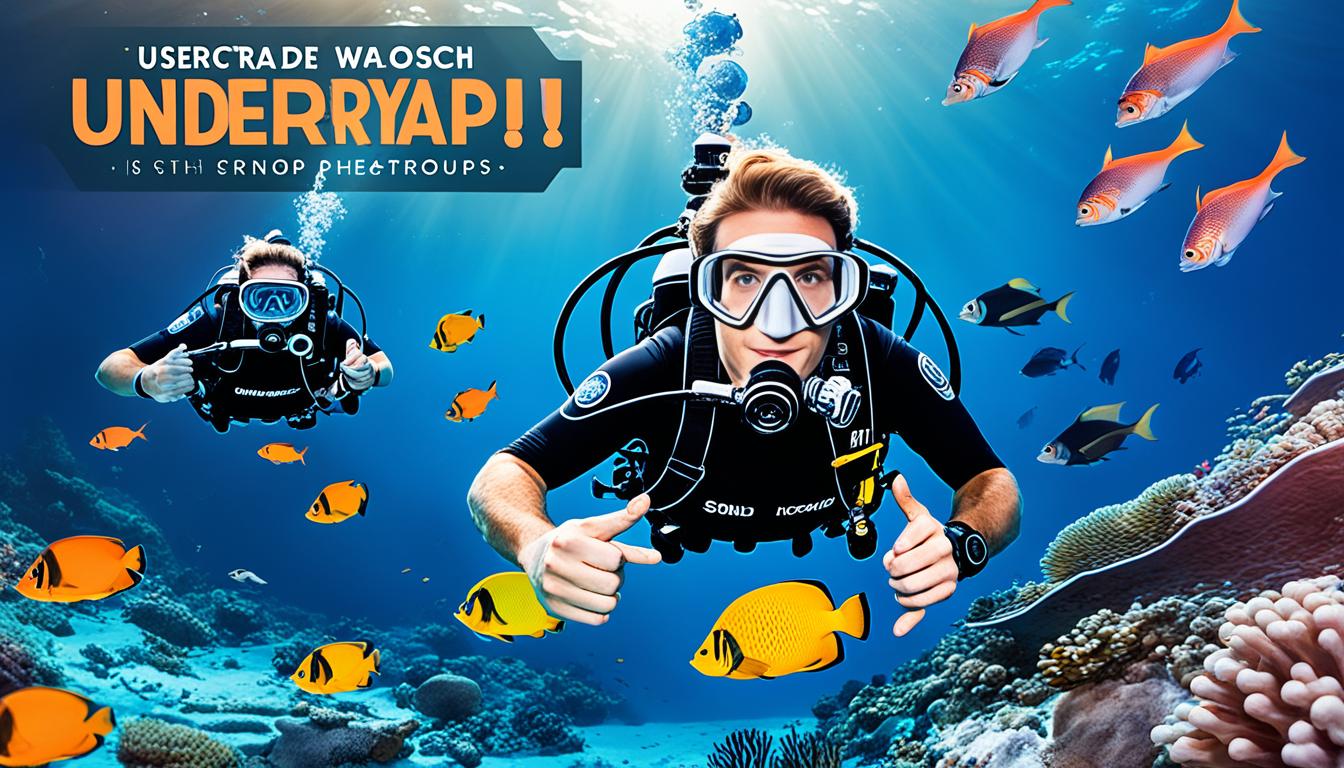Planning an underwater photography expedition requires careful preparation and research. Timing is everything when it comes to underwater photography, as it can greatly impact the marine life and conditions you encounter.
By choosing the right camera rig, getting your diving skills dialed in, and learning and practicing basic underwater photography concepts, you can increase your chances of capturing stunning images.
Additionally, conducting thorough research on the dive site, considering weather conditions, and understanding the behavior of marine subjects will help you plan a successful underwater photography expedition.
Key Takeaways:
- Timing is crucial for underwater photography, so plan your expedition accordingly.
- Choose the right camera rig for your experience level and the type of images you want to capture.
- Invest in lighting equipment to enhance your underwater photos.
- Improve your diving skills to position yourself better for capturing images.
- Understand basic underwater photography concepts such as getting close to your subject and utilizing natural light.
Choosing the Right Camera Rig for Underwater Photography
When it comes to underwater photography, choosing the right camera rig is essential for capturing breathtaking images. Your experience level and the type of images you aim to capture should influence your decision. Let’s explore the different options and find the perfect gear for your underwater adventures.
Point-and-Shoot Compact Camera
If you’re a beginner in underwater photography, a point-and-shoot compact camera is an excellent choice. These cameras are designed to be user-friendly and easy to handle underwater. They offer pre-set modes and automatic settings, allowing you to focus on composition rather than technicalities. Popular compact cameras for underwater photography include the Canon PowerShot G7 X Mark III and the Panasonic Lumix LX100 II.
DSLR Camera with Underwater Housing
If you have more experience and seek higher-quality images, a DSLR camera with an underwater housing is the way to go. DSLRs offer superior image quality, manual controls, and interchangeable lenses, giving you maximum creative freedom. Pairing your DSLR with a dedicated underwater housing ensures protection and allows you to explore the depths without limitations. Brands like Nikon and Canon offer a wide range of DSLR cameras and compatible housings for underwater photography.
Lighting for Underwater Photography
One important aspect of underwater photography is lighting. Water acts as a natural filter and absorbs light, resulting in dull and colorless images. To overcome this challenge, invest in strobes or underwater lights. These lighting solutions help illuminate your subjects, restore colors, and add depth to your photos. Popular options include the Sea & Sea YS-D2J and the Light & Motion Sola Video Pro 9600.
Now that we’ve explored the different camera rig options and lighting solutions, you can make an informed decision based on your preferences and goals. Remember to consider your experience level, desired image quality, and the underwater conditions you’ll be shooting in. Whether you choose a compact camera or a DSLR setup, the right gear will set you up for success in capturing stunning underwater moments.
Getting Your Diving Skills Dialed In
Improving your diving skills is crucial to becoming a proficient underwater photographer. It allows you to better position yourself for capturing breathtaking photos.
To start, focus on perfecting your buoyancy and control in the water. This will help you stay stable and maneuver smoothly, minimizing disturbances to the marine environment. Practice different finning techniques to find the one that suits you best, and work on your trim to achieve a streamlined body position.
Controlling your body positioning is another essential skill to develop. By mastering this, you can find the optimal angle and perspective to capture captivating underwater images. Experiment with different body movements and learn how to adapt to the ever-changing underwater conditions.
If you’re looking to take your skills to the next level, consider enrolling in underwater photography courses or workshops. These specialized programs provide valuable insights from experienced photographers and teach advanced techniques to enhance your underwater photography skills.
Remember, practice makes perfect! Regularly getting in the water and honing your diving skills will greatly contribute to your success as an underwater photographer.
Underwater Photography Techniques
- Perfecting buoyancy and control
- Experimenting with different finning techniques
- Working on body positioning and trim
- Adapting to changing underwater conditions
“Improving your diving skills is the foundation of capturing stunning underwater photographs.” – Erin Thompson, Underwater Photography Workshop Instructor
Underwater Photography Courses and Workshops
| Course/Workshop | Description |
|---|---|
| Advanced Underwater Photography Workshop | Designed for experienced underwater photographers, this workshop focuses on advanced techniques, composition, and post-processing skills. |
| Introduction to Underwater Photography Course | Perfect for beginners, this course provides a comprehensive introduction to underwater photography, covering camera settings, lighting, and composition. |
| Underwater Photography Masterclass | Join renowned underwater photographers in this masterclass to refine your skills and gain insights into their creative process. |
Taking part in these courses or workshops not only allows you to learn from experts but also gives you the opportunity to connect with fellow photography enthusiasts. It’s a great way to expand your knowledge, get inspired, and foster a sense of community within the underwater photography world.

Learning and Practicing Basic Underwater Photography Concepts
Understanding basic underwater photography techniques is paramount in capturing high-quality images. By implementing these techniques, you can elevate your photography skills and create stunning underwater photographs.
Get Close to Your Subject
One of the essential underwater photography techniques is getting close to your subject. By minimizing the water between your camera and your subject, you can achieve clearer and more vibrant images. Getting closer also allows you to capture the intricate details and unique characteristics of marine life.
Utilize Natural Light
When shooting in shallow water, take advantage of natural light to enhance your wide-angle reef images. Position yourself in a way that allows natural light to illuminate your subject, resulting in captivating and well-lit photos. Understanding how light interacts with underwater environments is key to achieving visually striking images.
Manual White Balance Adjustment
To achieve accurate color reproduction in your underwater photographs, consider using manual white balance adjustment. Underwater conditions often distort colors, but adjusting the white balance can help restore the true colors of the scene. Experiment with different white balance settings to find the one that best suits the conditions and creates vibrant and true-to-life images.
Experiment with Settings and Composition
Don’t be afraid to experiment with different camera settings and composition techniques. Play around with aperture, shutter speed, and ISO to achieve different effects and capture the mood of the underwater environment. Try different composition techniques, such as rule of thirds or leading lines, to add visual interest to your photographs.
Remember, mastering these basic underwater photography concepts takes time and practice. Consider enrolling in underwater photography courses or workshops to enhance your skills further. These courses provide guidance from experienced photographers and offer hands-on experience in real-life underwater scenarios.
By applying these techniques and continuously practicing, you can elevate your underwater photography skills and capture breathtaking images that truly showcase the beauty of the underwater world.
Conducting Thorough Research on Dive Sites and Marine Subjects
Before embarking on an underwater photography expedition, it is essential to conduct thorough research on the dive sites and marine subjects you will encounter. By knowing the best underwater photography destinations and understanding the behavior of marine life, you can significantly enhance your chances of capturing breathtaking images.
Firstly, research the dive sites to determine the best locations for underwater photography. Find out which areas are known for their abundant marine life and vibrant underwater ecosystems. Some of the best underwater photography destinations include:
- Great Barrier Reef, Australia
- Palau, Micronesia
- Raja Ampat, Indonesia
- Maldives
- Galapagos Islands, Ecuador
Each of these destinations offers unique photography opportunities, with diverse marine species and stunning underwater landscapes.
Additionally, research the behavior of marine subjects in the area. Understanding the habits and patterns of marine life will help you anticipate their movements and capture compelling photographs. For example, if you are interested in photographing colorful coral reefs, research when the coral blooms occur and when specific marine species are most active.
Consulting dive guides, locals, and experienced underwater photographers can provide valuable insights and insider tips. They can recommend hidden spots that may offer unique photo opportunities and advise on the best times for diving and photography.
Finally, stay updated on tides, swell reports, and weather conditions to choose the optimal time for diving. Weather conditions can greatly affect underwater visibility and the behavior of marine life. Plan your expedition during a season with favorable weather conditions to increase your chances of capturing clear and vibrant images.
“Research is the key to successful underwater photography. Understanding the dive sites and marine subjects allows us to plan our photography expedition strategically, optimizing our chances of capturing awe-inspiring images.”
Remember, the more thorough your research, the better prepared you will be to explore the best underwater photography destinations and create stunning images that showcase the beauty of the underwater world.

Conclusion
Planning an underwater photography expedition requires careful consideration and preparation. By choosing the right camera rig, improving our diving skills, and learning and practicing basic underwater photography concepts, we can enhance our chances of capturing stunning images. Thorough research on dive sites and marine subjects will allow us to plan our trip accordingly and maximize our photography opportunities. Remember, timing is everything when it comes to underwater photography, so let’s plan our expedition wisely to achieve the best results.
FAQ
What camera should I use for underwater photography?
The camera you choose for underwater photography depends on your experience level and the type of images you want to capture. Beginners can start with a point-and-shoot compact camera, while more experienced photographers may opt for a DSLR camera with an underwater housing for higher-quality images.
What lighting equipment do I need for underwater photography?
Lighting is crucial for underwater photography. Consider investing in strobes or underwater lights to enhance your photos and bring out vibrant colors. These lighting tools can help compensate for the loss of color and contrast caused by the water.
How can I improve my diving skills for underwater photography?
Improving your diving skills is essential for underwater photography. Practice perfecting your buoyancy and control, work on finning techniques, and learn how to control your body positioning underwater. Taking underwater photography courses or workshops can also help you learn advanced techniques and gain valuable insights from experienced photographers.
What are some basic underwater photography techniques?
To capture high-quality underwater images, remember to get close to your subject, minimize the water between your camera and the subject for clearer images, and utilize natural light in shallow water for wide-angle reef shots. Additionally, consider using manual white balance adjustment for better color reproduction and experiment with different settings and composition techniques to enhance your photography skills.
How can I plan a successful underwater photography expedition?
Planning a successful underwater photography expedition requires thorough research. Before your trip, gather information on the dive site, marine subjects, and weather conditions. Find out what marine life is prevalent in the area and when the best time to photograph them is. Consult dive guides, locals, and other underwater photographers for insights and tips on hidden spots that may offer unique photo opportunities.
How Can I Plan an Underwater Photography Expedition to Improve My Portfolio?
Planning an underwater photography expedition to improve your underwater photography portfolio craft involves research, scouting locations, preparing equipment, and ensuring safety measures. Research the best spots, pack waterproof cameras and accessories, and plan for diving certifications and weather conditions. Focus on capturing unique marine life and stunning underwater landscapes.




